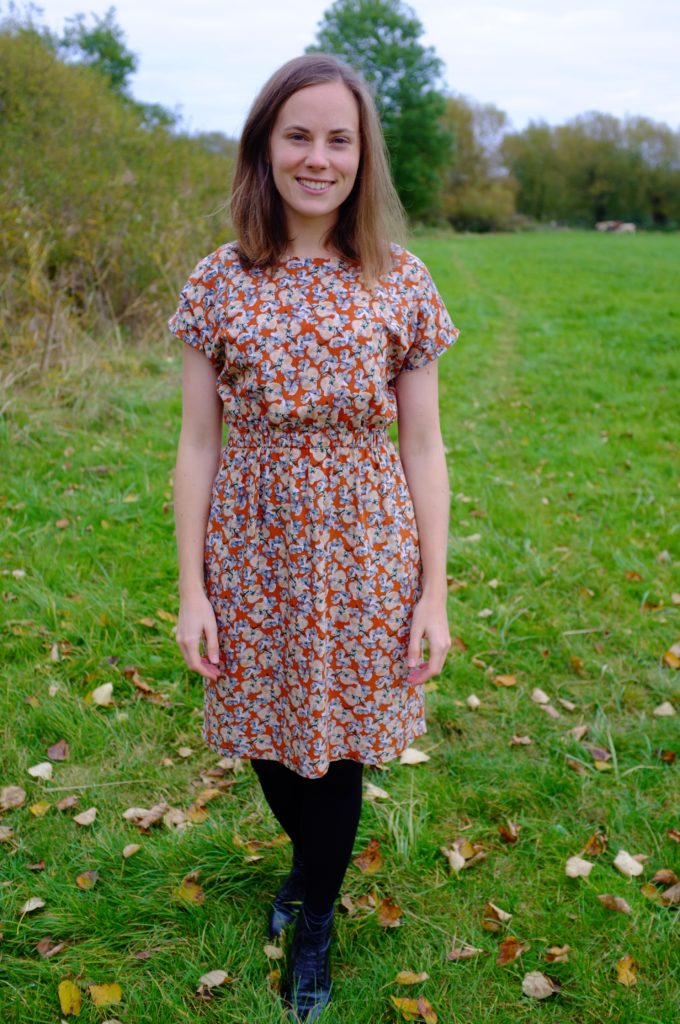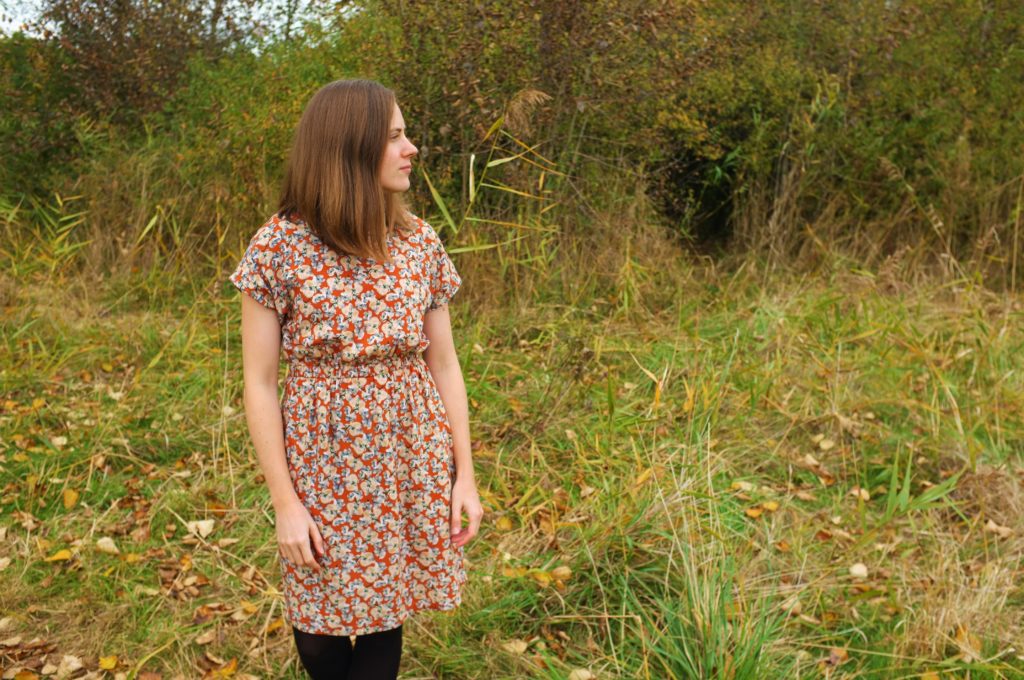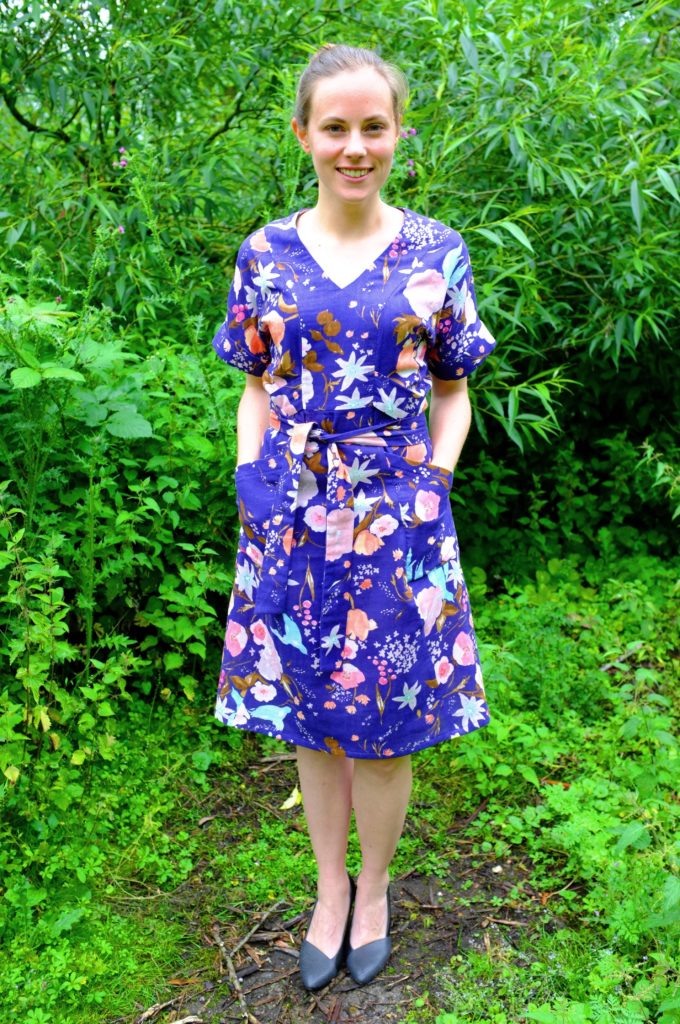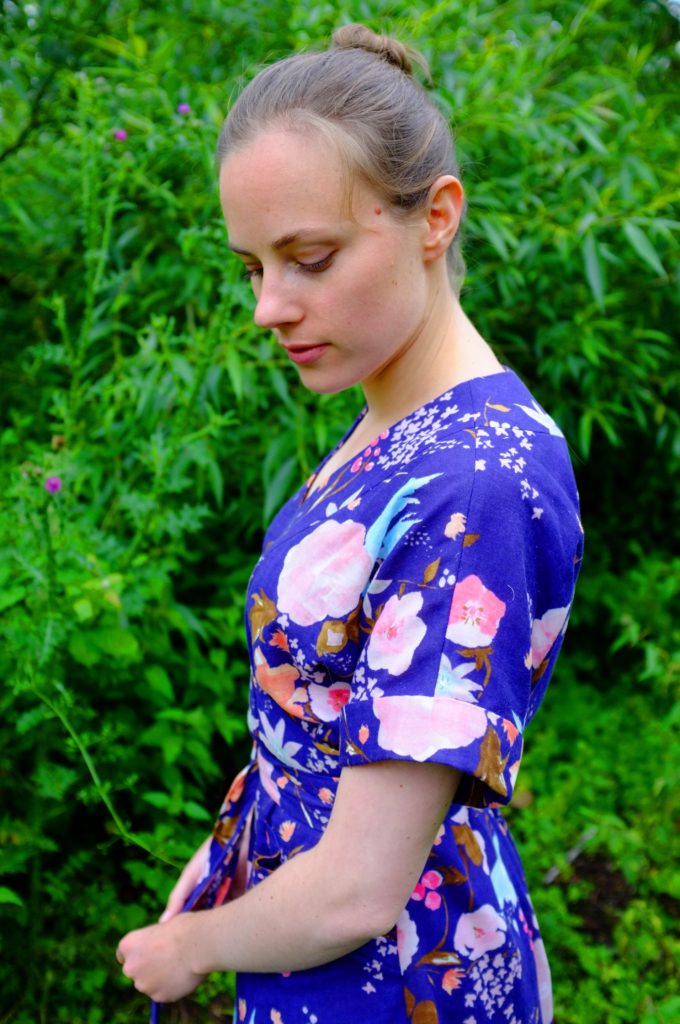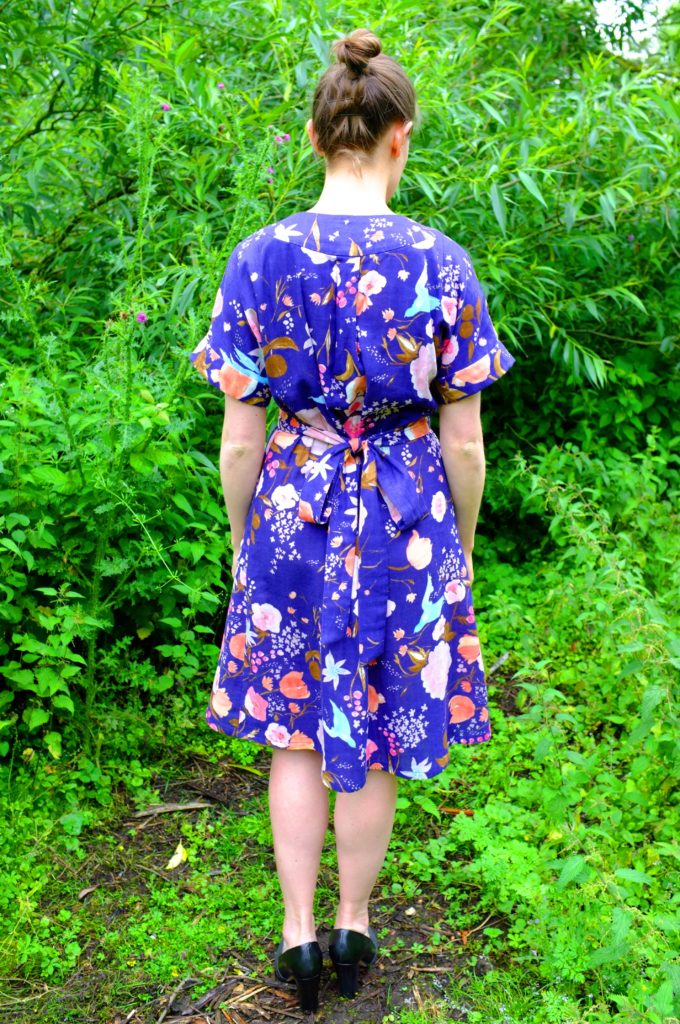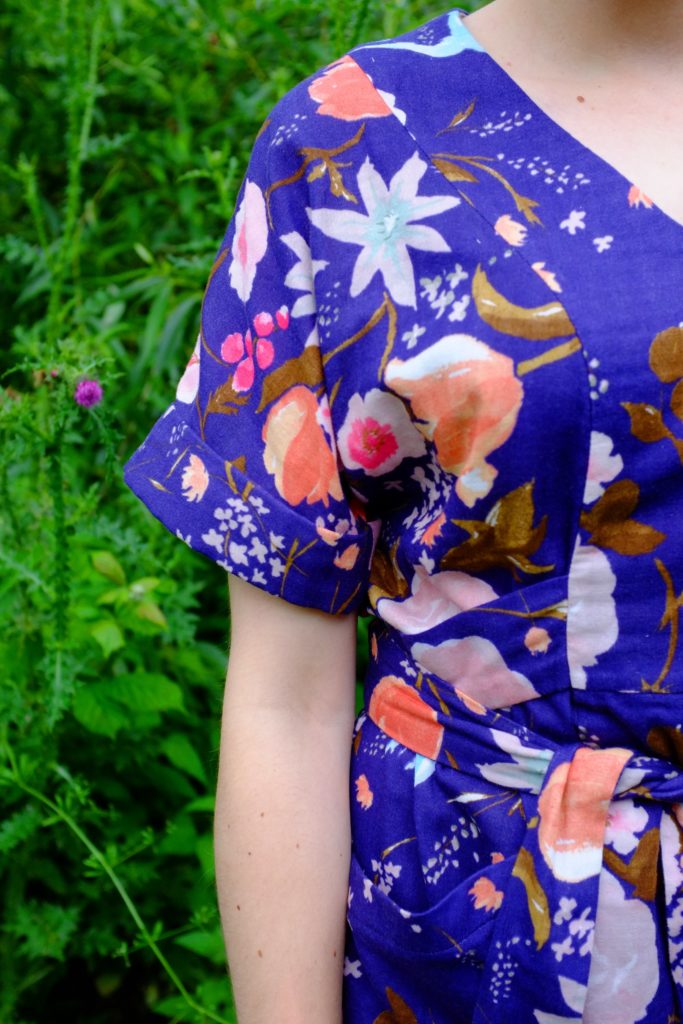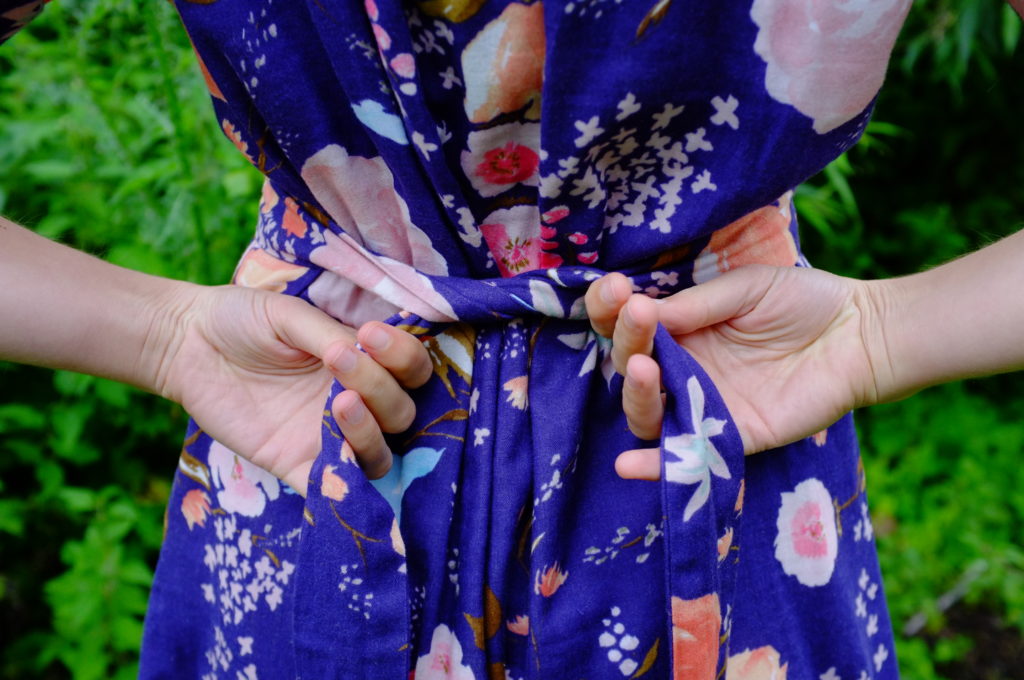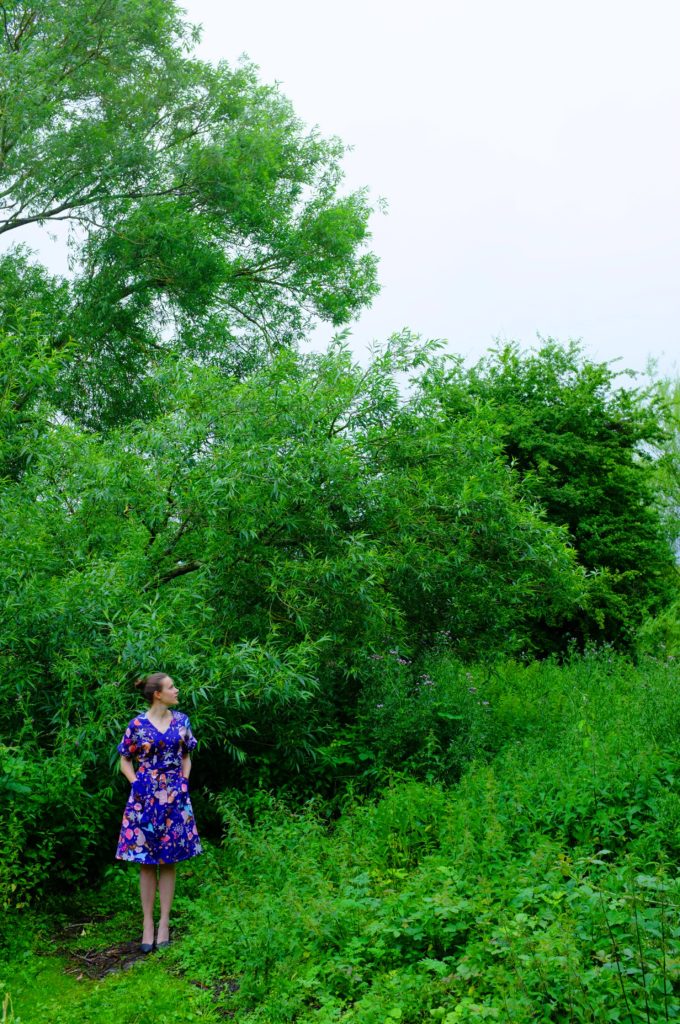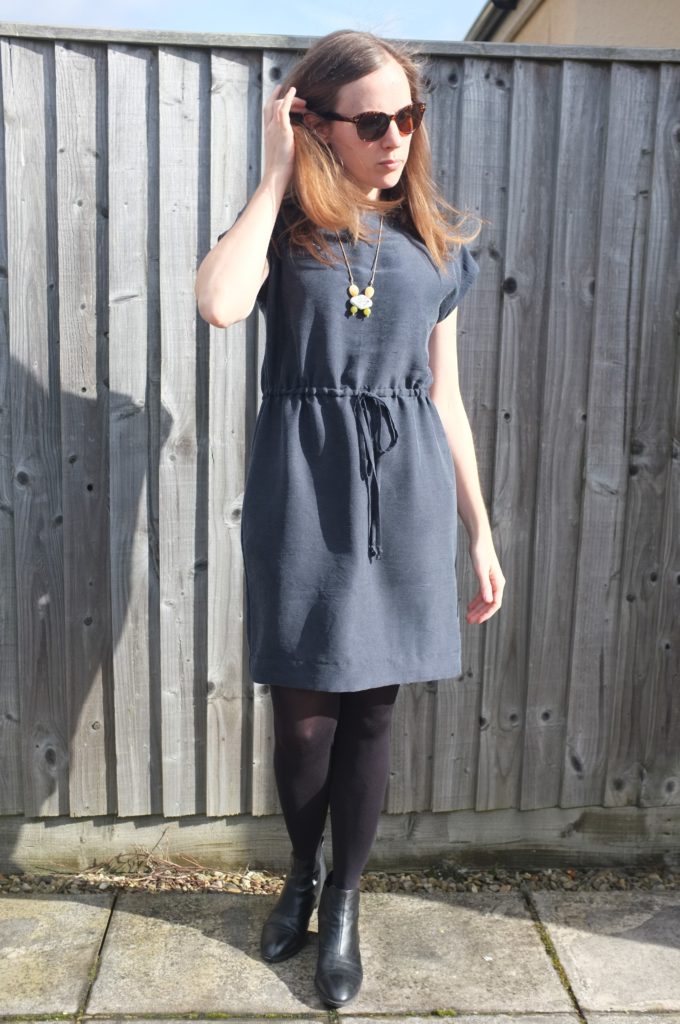
Hi everyone, I can’t believe that this is my first proper blog post of the year! Where did time go? Apart from being super busy, I’m currently working on several garments that need muslining and I don’t have any final garments to show yet. So this little dress is the only thing that I actually made this year. I probably finished it a month ago but thanks to the rubbish weather in the UK I didn’t get a chance to take pictures of it until today. The good thing about that is though that I have already worn it quite a bit and I can attest that it’s love. It’s exactly the simple versatile dress that I was looking for.
First let’s talk about this fabric. It’s one of the fabrics that I picked up on Goldhawk Road on my birthday. The seller called it sand-washed silk satin and it has the most amazing weight and texture. While it feels luxurious to wear, the irregular structures in the fabric make it look quite casual. Thanks to it’s thickness, it’s the perfect fabric for a dress. It machine-washes and presses beautifully and is almost wrinkle-free. I took these photos after travelling with it to Colombia (it was perfect for the unpredictable weather in Bogotá) and haven’t ironed it since, I just let it hang for a day. I love fabrics like that!
As for the pattern, I used the same as for this orchid-print dress, which was basically the wearable muslin for this dress. It’s a slightly hacked dress pattern from the French sewing magazine fashion Style N°9, which I’ve now realised is just a translation of the Dutch KnipMode magazine (June 2016 edition). I only made minor changes to the pattern compared to the the last dress. I widened the neckline (which is finished with a facing) slightly and slimmed down the sleeves a little bit. Instead of the elasticated waist I added a draw string from the same fabric. I love how it looks and I like being able to wear the waist looser if I want to.
The back of the dress has a centre seam with a keyhole detail at the neck and a simple slit at the skirt. It’s not the most sophisticated version of a vent, but I love how the tip stitching detail of the keyhole is mirrored in the vent.
All in all, it’s quite a simple dress, but I love it. It’s super versatile, I can wear it to work with a blazer and more casually with a cardigan. In case you are not a fan of sewing magazine patterns, I think this dress could be easily recreated with Marilla Walker’s Maya Dress pattern.
Oh, and the necklace that I’m wearing was my 2017 Secret Valentine Exchange present from the lovely Rachel at Freckle & Co. Isn’t it the perfect match?









